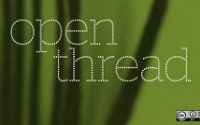Four Moves to keep it R.E.A.L.
This is a blog post for the Ontario Extend module CURATOR with a contribution to the curator activity bank – Holy CRAAP.
After using the online form for the video resource suggested, I found I was not alone in my observations. I also found that my observations were not the average and may have skewed the results. While I may be more critical of online resources or less patient in my search for the veracity, reliability, currency, accuracy or purpose, I’m hard pressed to find any use for this specific video in my teaching practice. I’m thinking there needs to be another layer to online detection for educators – is it useful in part or full, for the students I am teaching?
This idea about detecting what’s R.E.A.L (Reliable, Effective, Authentic, Legitimate) in the web spaces we inhabit is something I’ve included in the media and digital literacy courses [Digital Teaching and Learning Module 5] I’ve taught so not a new topic of reflection. I’ve used the CRAAP analogy before. Finding Howard Rheingold’s CRAP detection resources – particularly the 100+ detection resources as a ‘clickable index’ – is helpful, but only goes so far. In this document created by Rheingold, there is one small section exploring the detection resources for education – not nearly enough here.
So as I’m curating this compilation of resource around the topic of analyzing the web for veracity, authenticity, currency and reliability, it was no surprise to find this in my Twitter notifications stream.
"The world has changed around us. You can forget teaching students for a future world of whatever. We’re going to struggle to teach them for the world we are currently in right now."
via @davecormier https://t.co/Gww9P0C3vR#DigitalCitizenship @tina_zita #nled #nsed #onted
— Donna Miller Fry (@fryed) March 26, 2018
Since Donna Miller Fry is one of those people in my circles of influence whom I trust, I decided to take a closer look at what she was saying.
This led me to Dave Cormier’s blog post Beyond the Tree Octupus – Why we need a new view of K12 (digital) literacy in a Cambridge Analytica world. In this post he leverages the word TRUST as a key factor in examining web media. Rheingold also brings this into the equation in his book Net Smart: How to Thrive Online. Sources we trust are shaped by our bias and perspectives. While I may not trust Facebook and never have, others I know are active in that space because they trust Facebook to provide the service they need. My ‘craap’ radar goes up every time I enter into Facebook spaces. I particularly like this video with Howard Rheingold talking about crap detection [Crap Detection 101: How to distinguish good and bad information online]
So how do we teach our students in K-12 and higher education spaces about trust and veracity as they navigate, use, create and share in web spaces. This Pressbooks OER resource will come in handy – Web Literacy for Student Factcheckers by Michael A. Caufield – specifically Chapter 4: 2 Four Moves
These four moves include: check for previous work, go upstream to the source, read laterally, and then circle back. These four moves are certainly a way to build trust for a source or resource. For educators, the back matter of this book has a section on ‘position to know: expertise, opportunity and access’ which may shed some light on moves relevant for educators as we analyze, synthesize and evaluate web resources for our teaching and learning.
What strategies do you use to teach students at all levels and stages of education to build in these four moves. As Rheingold states, “learning to live mindfully in cyberculture is as important to us as a civilization as it is vital to you and me as individuals” (p.1)
References
Caufield, M. A. (2017, January 8). Web literacy for student fact checkers …. and other people who care about facts. PressBooks. Retrieved from https://webliteracy.pressbooks.com/
Rheingold, H. (2012). Net Smart: How to thrive online. Retreived from https://mitpress.mit.edu/sites/default/files/titles/content/9780262017459_sch_0001.pdf


